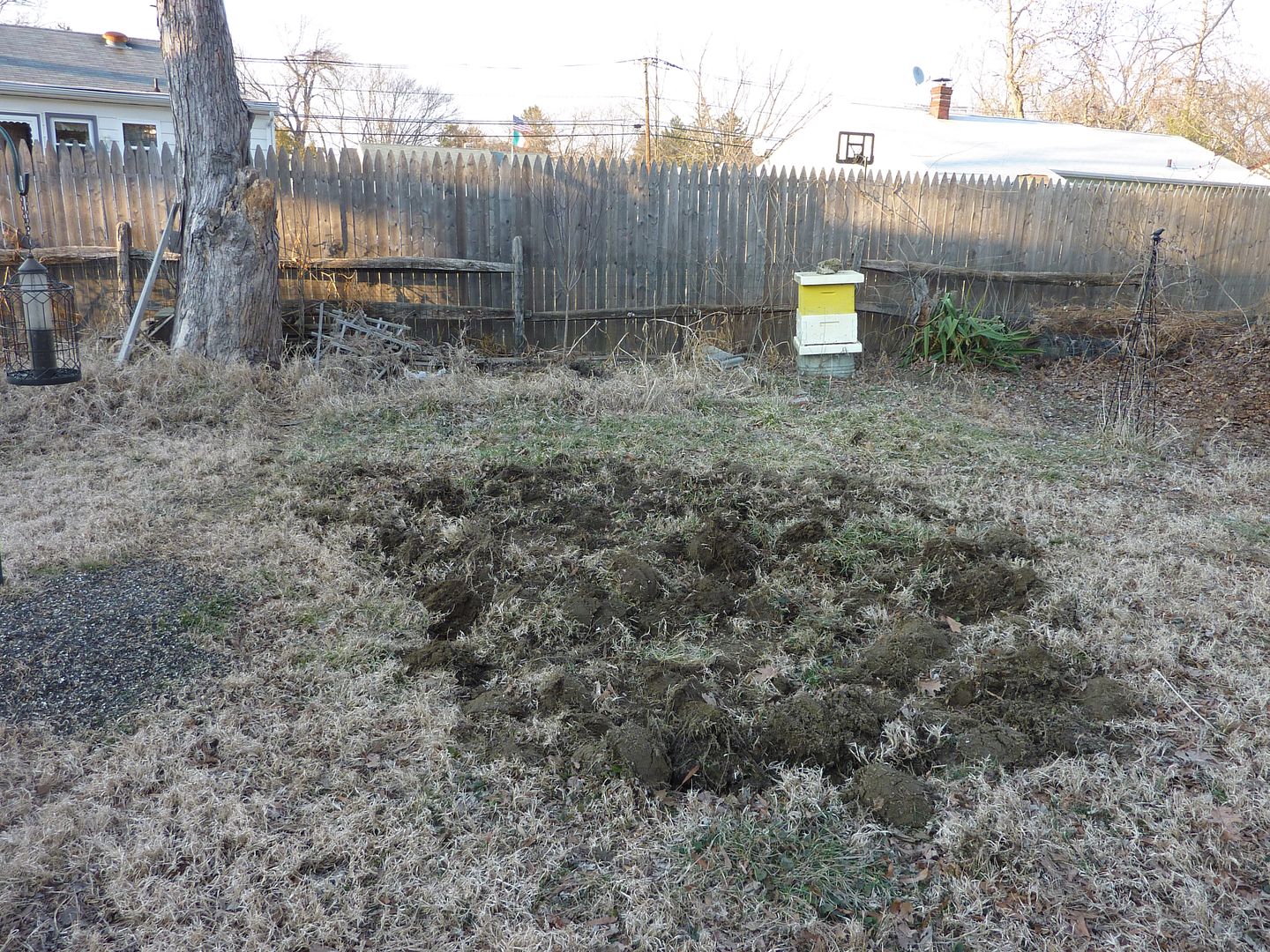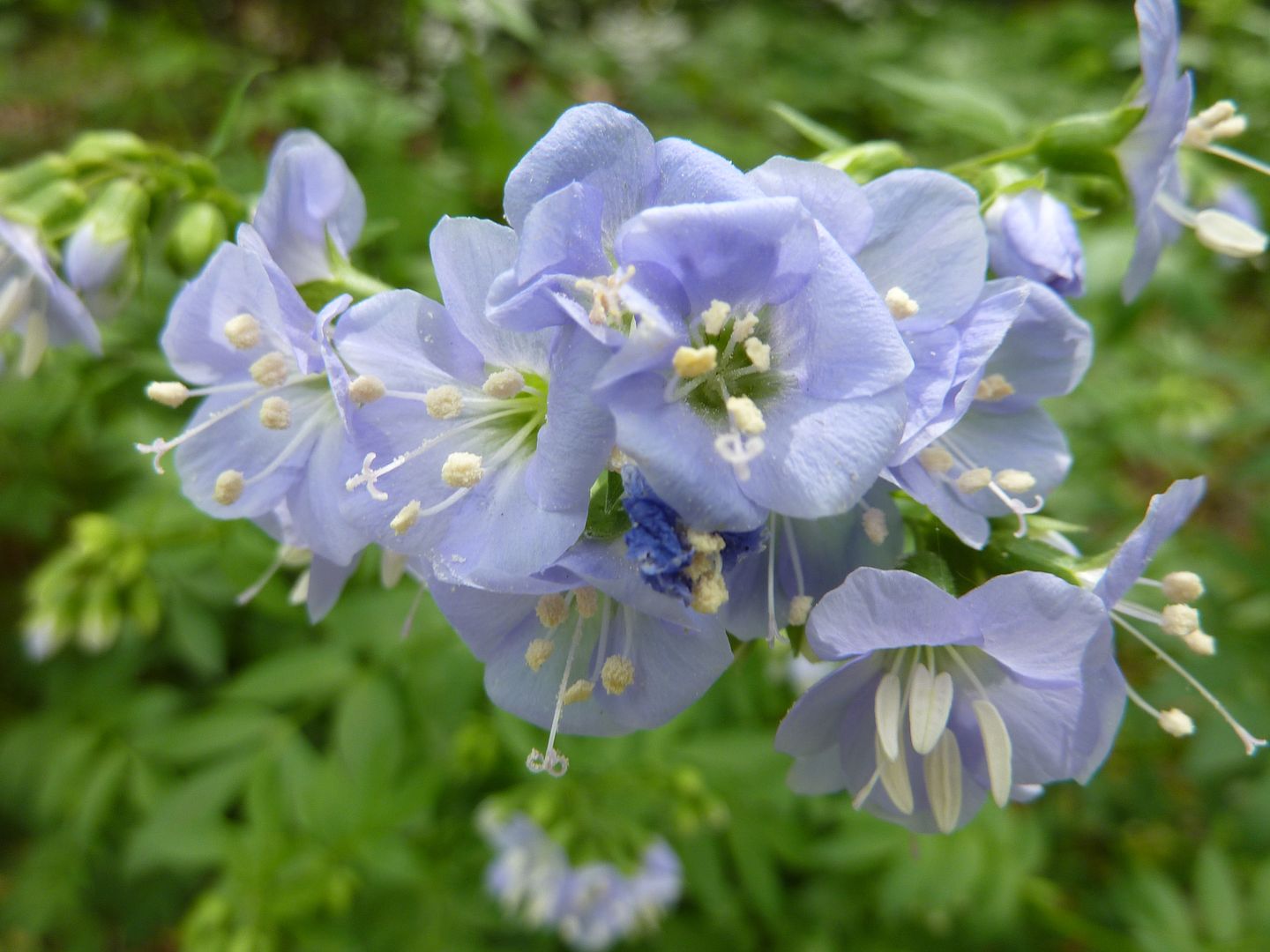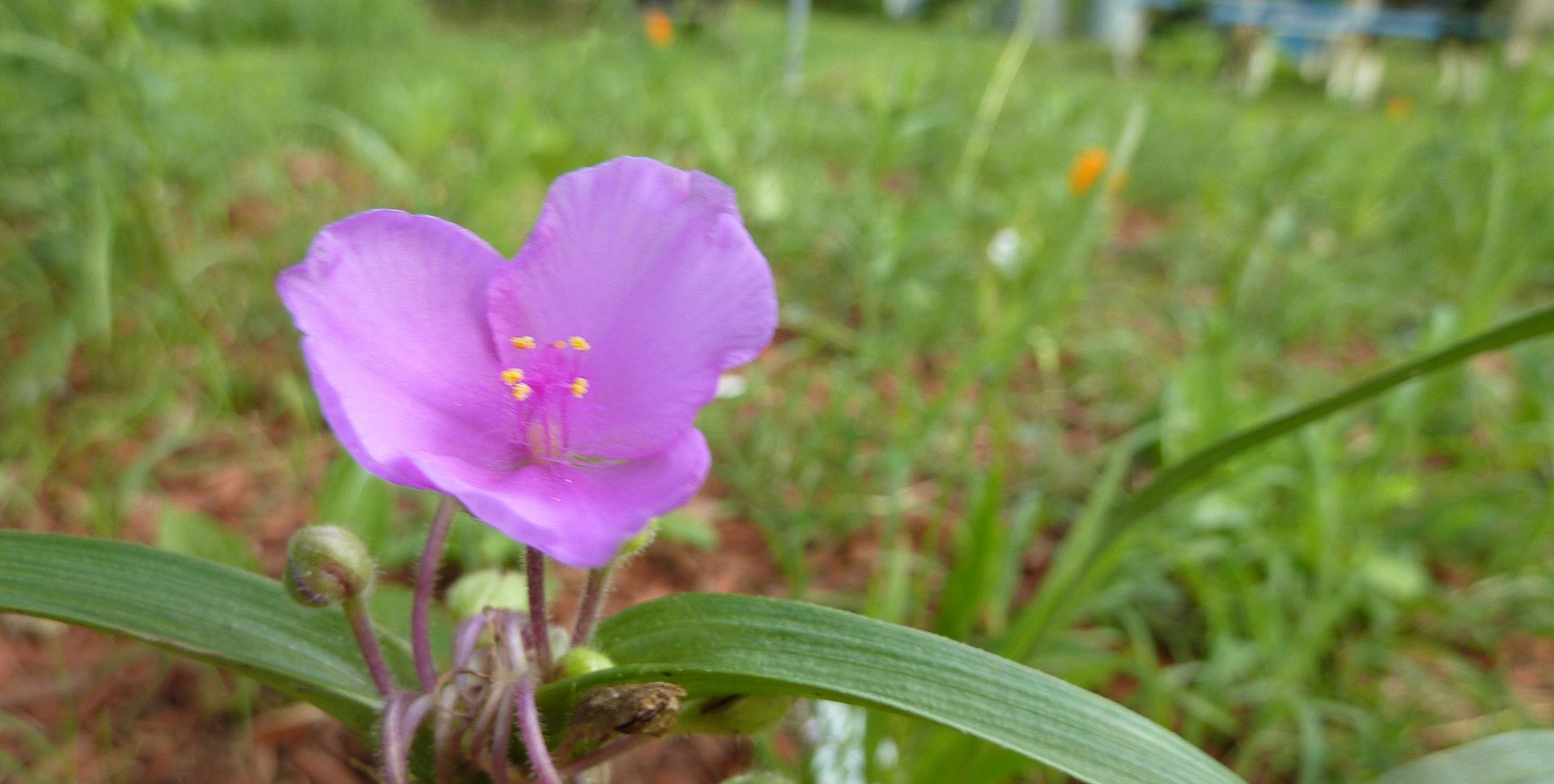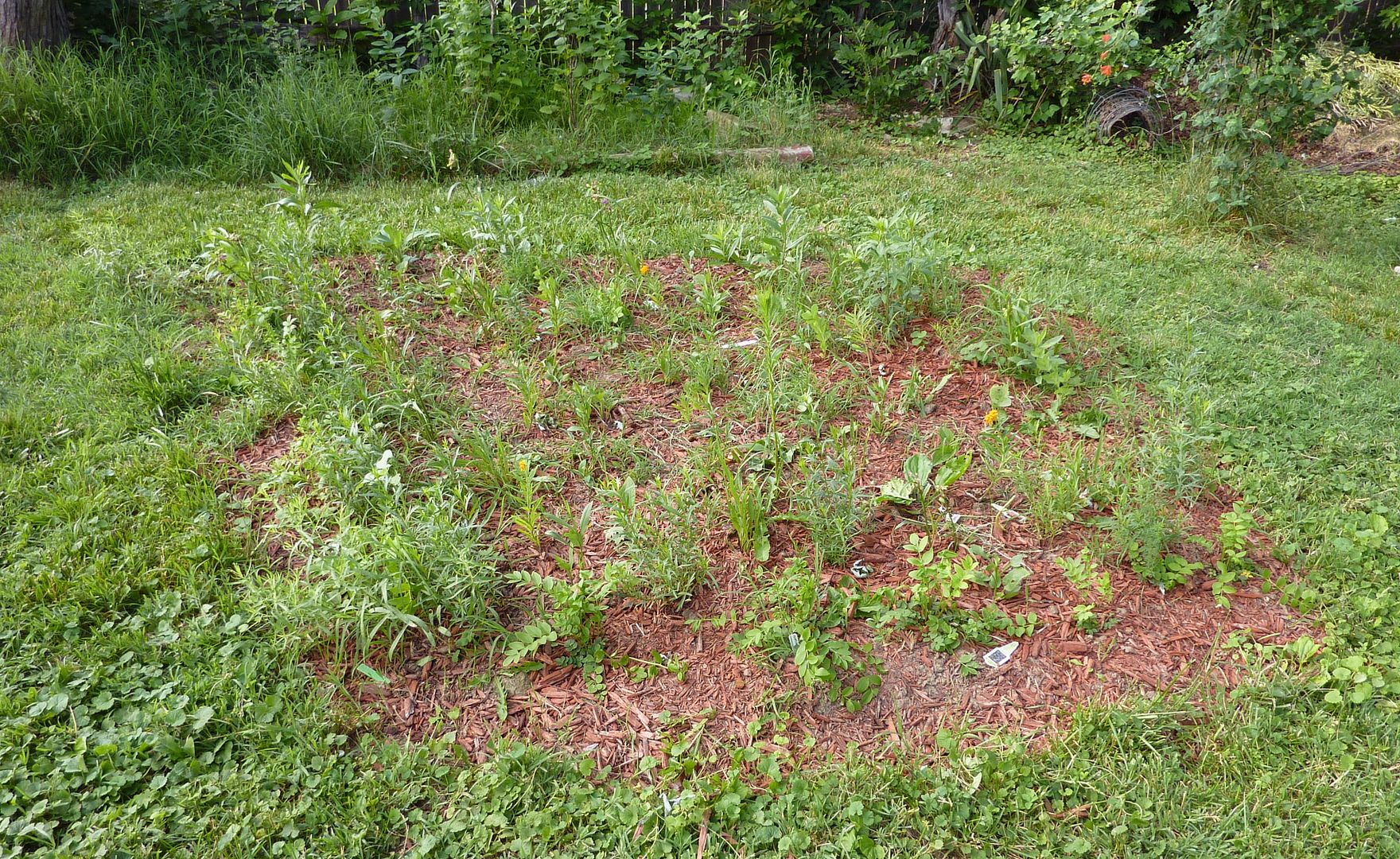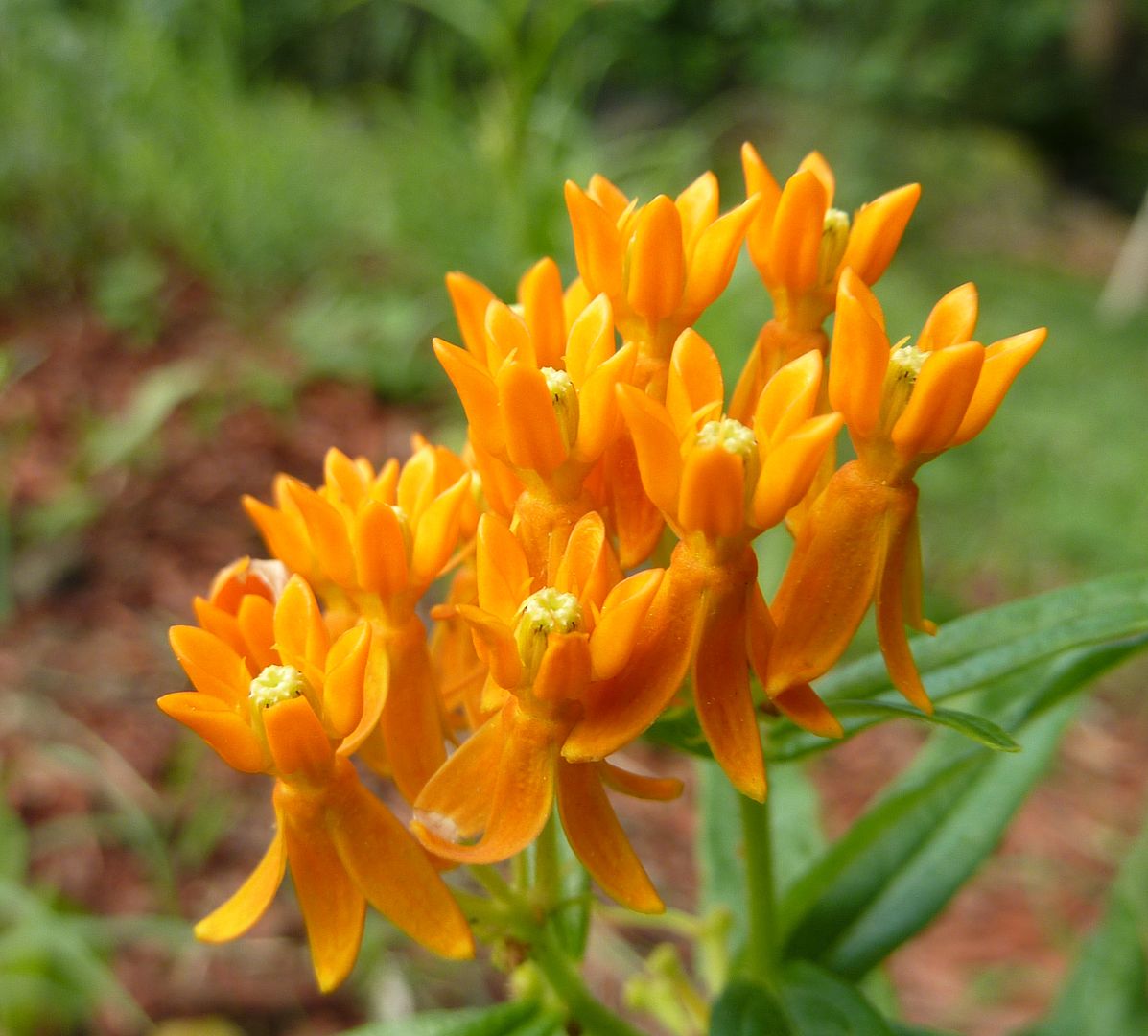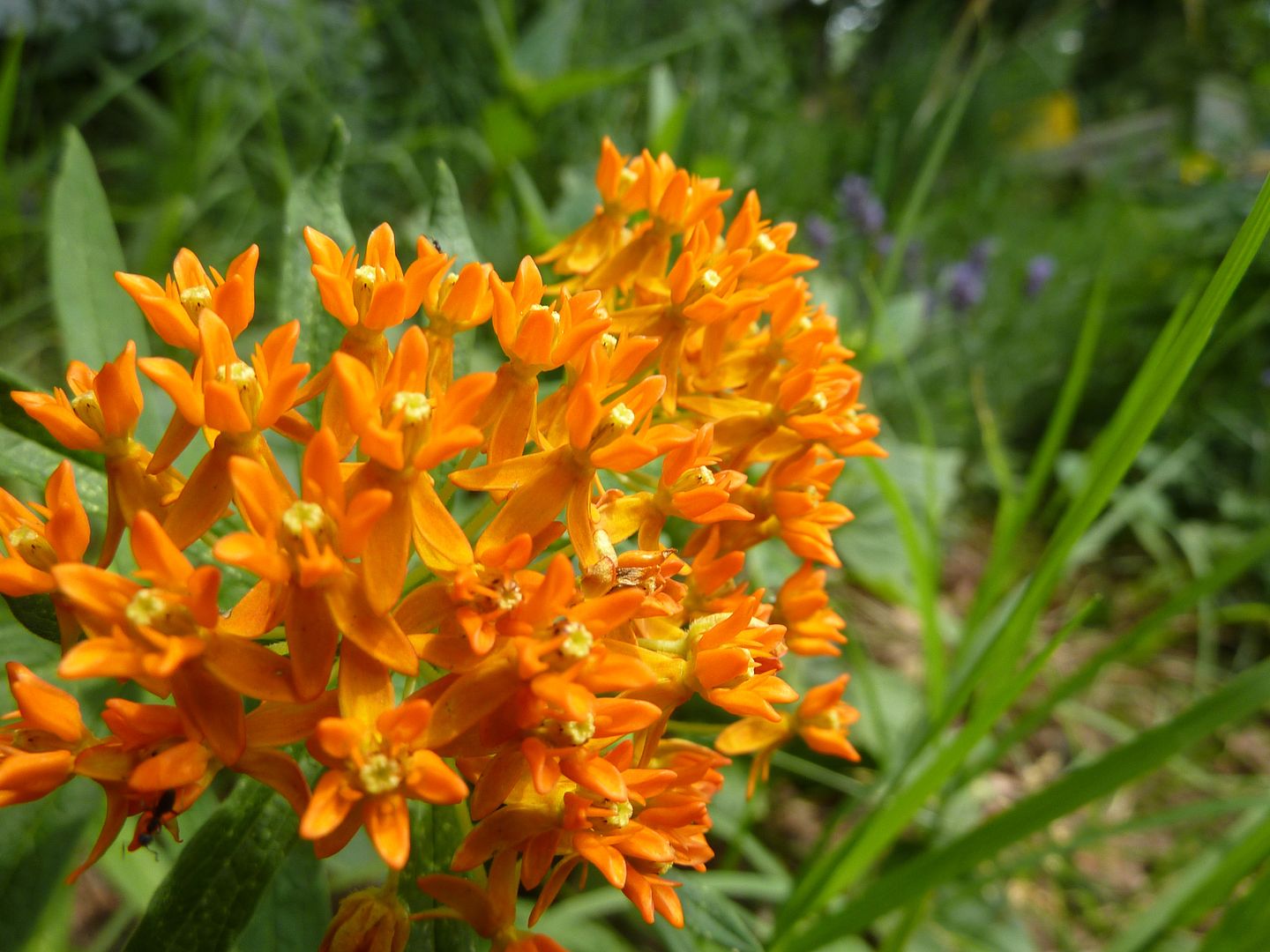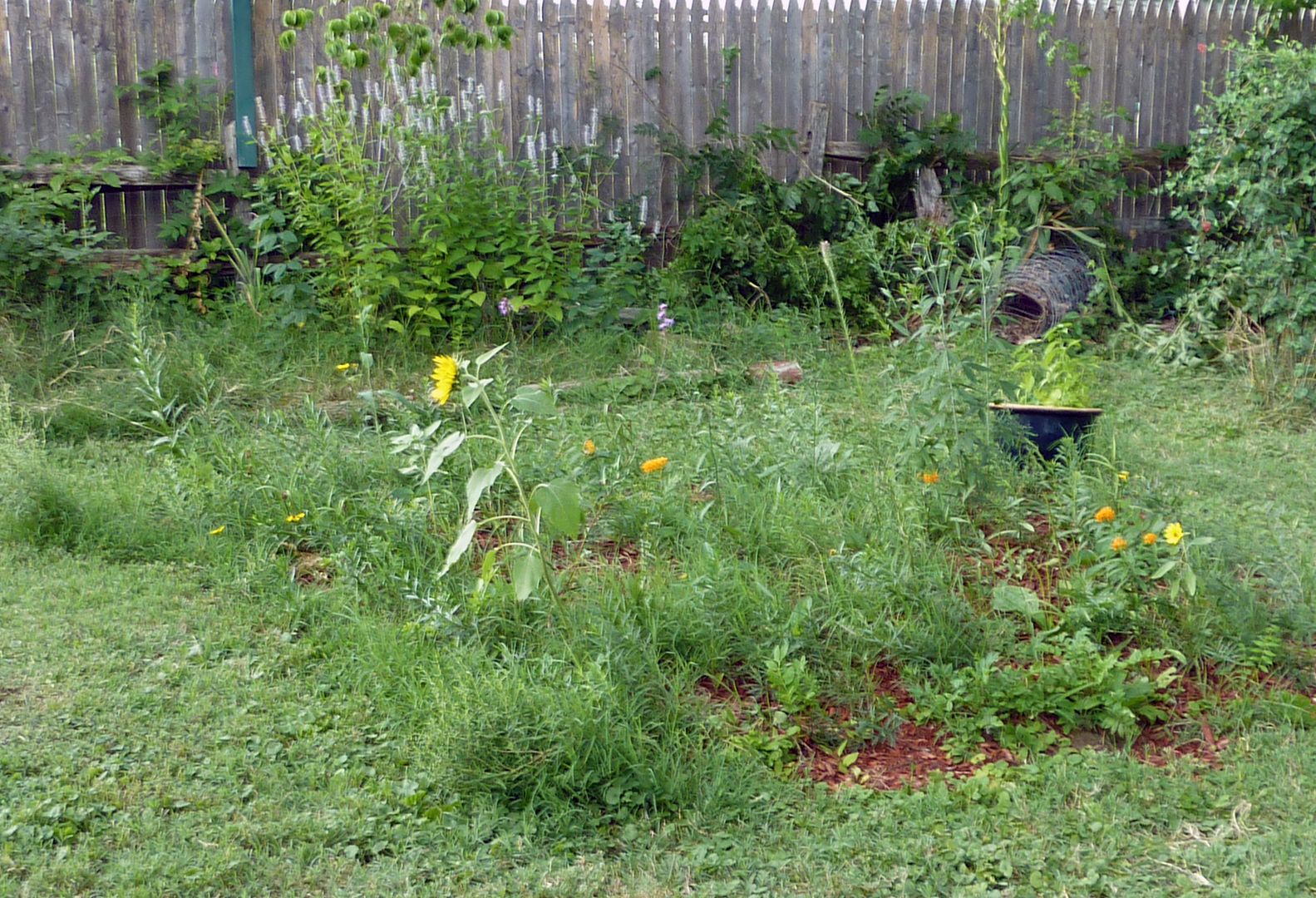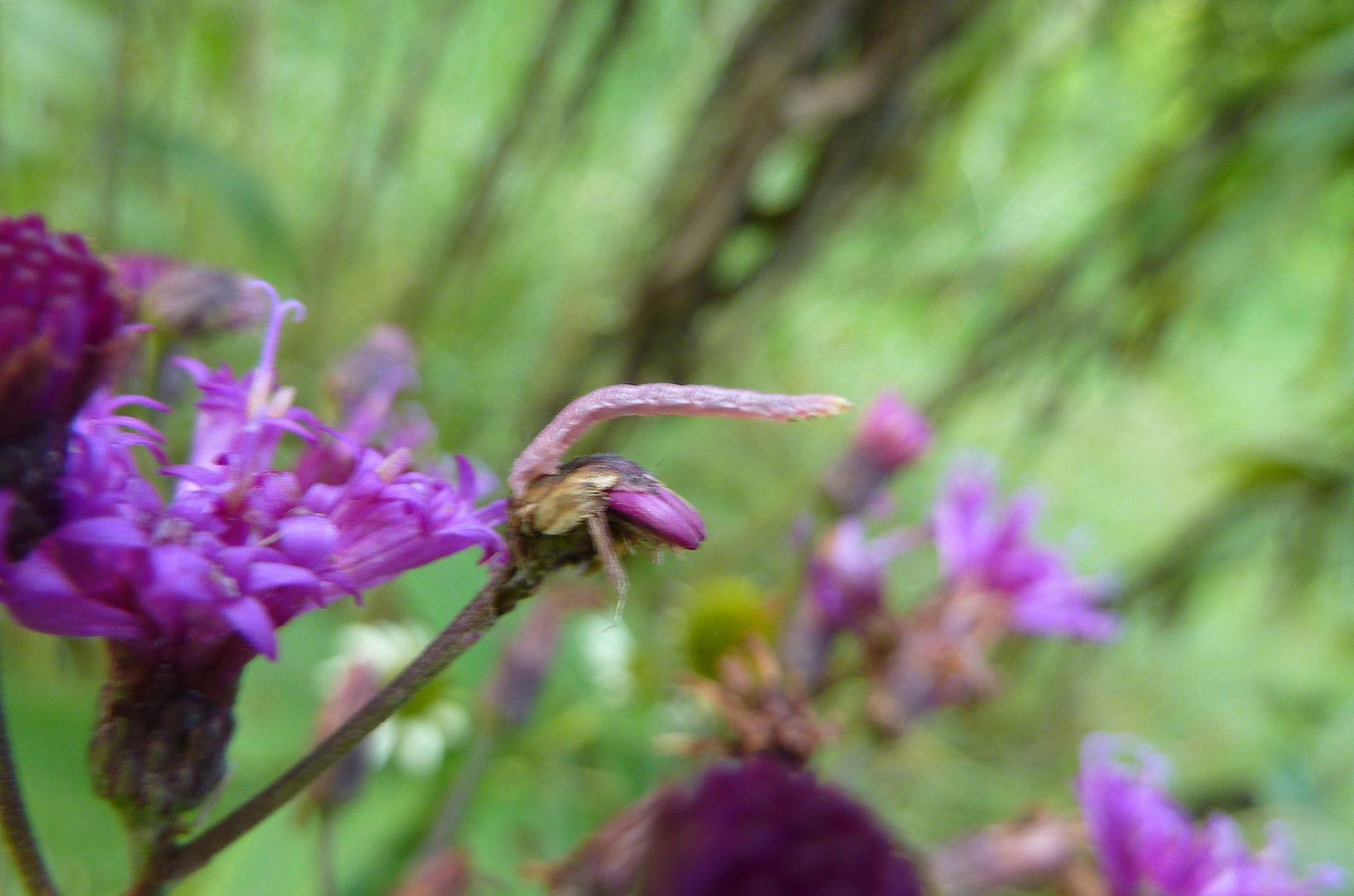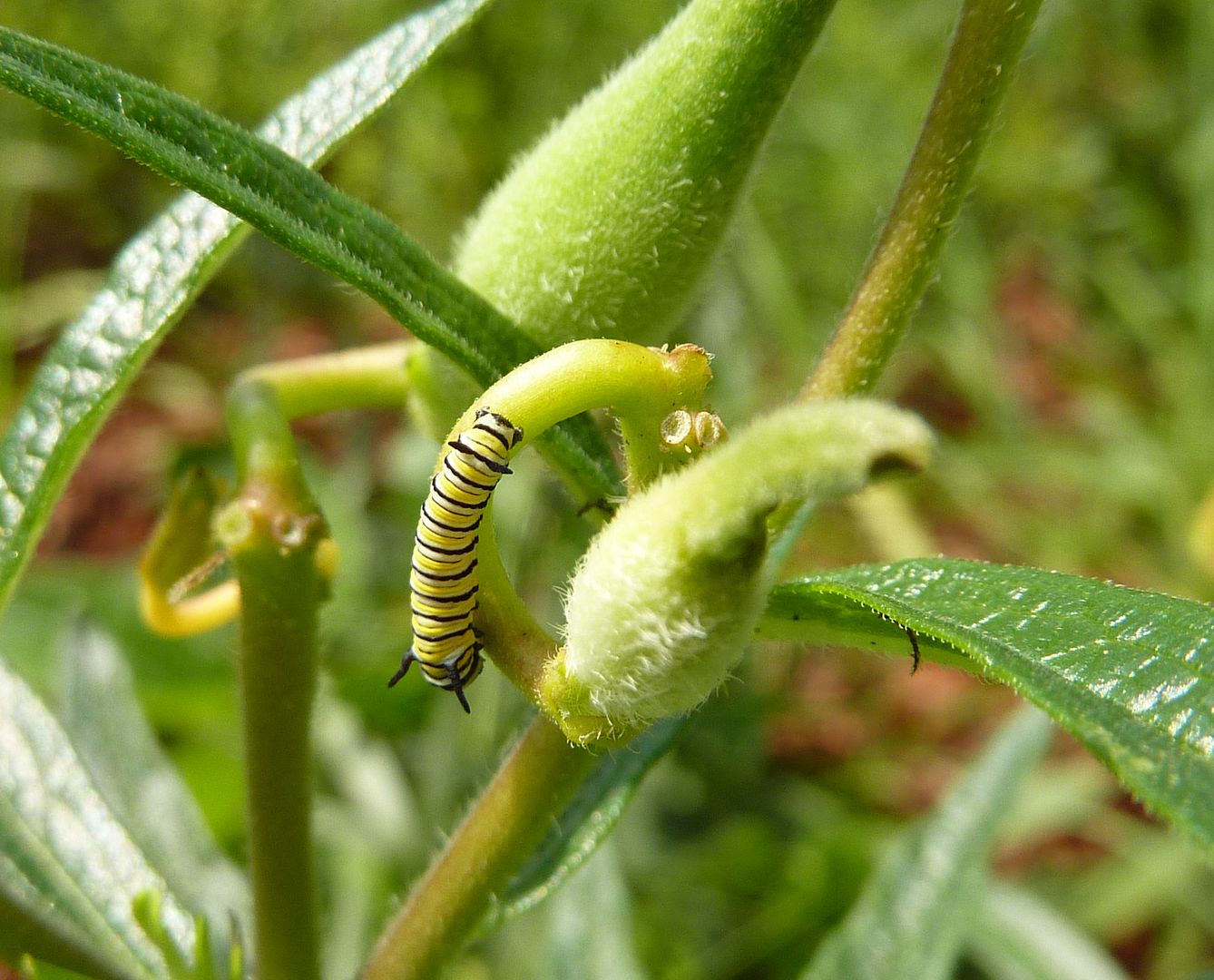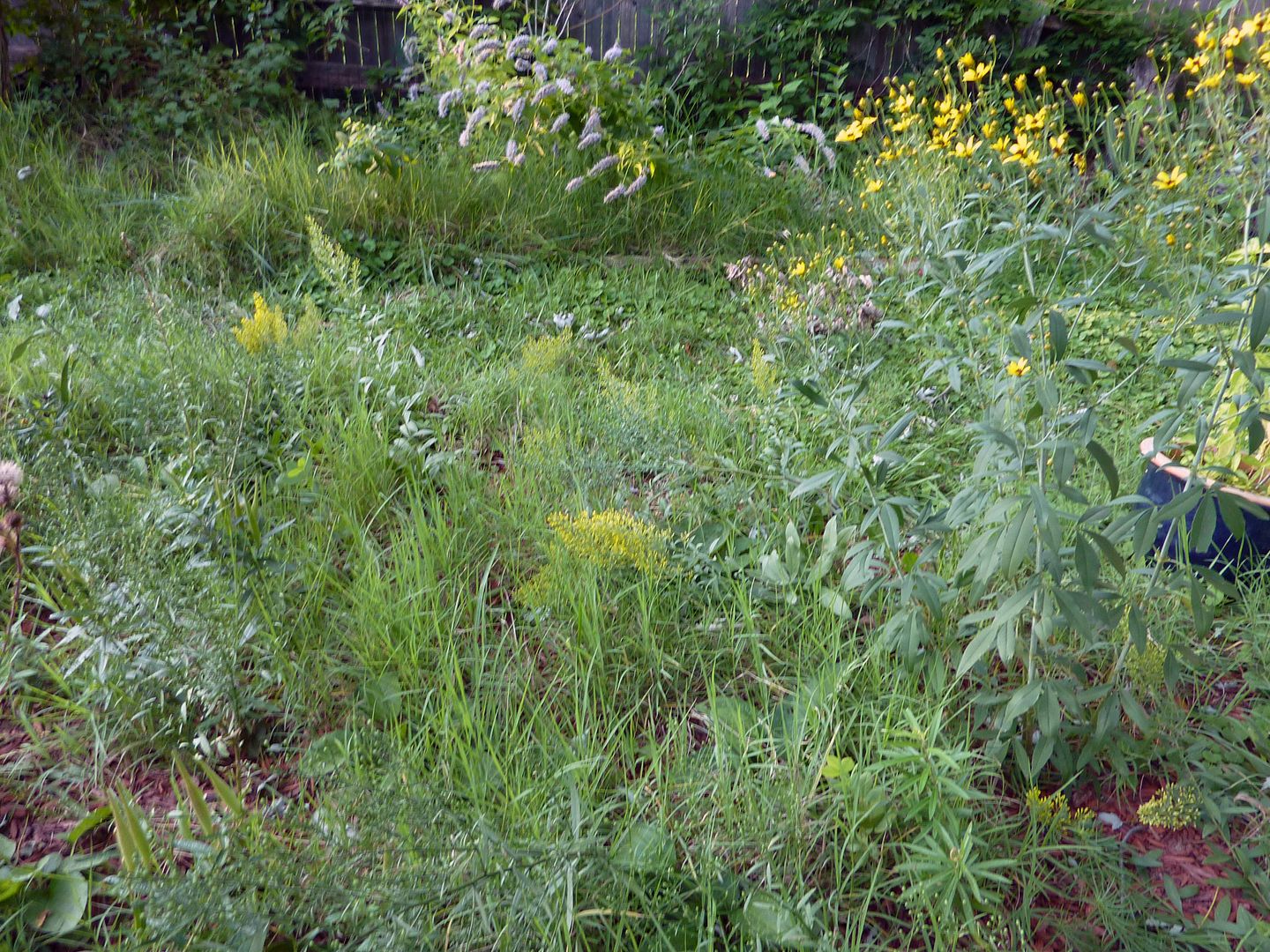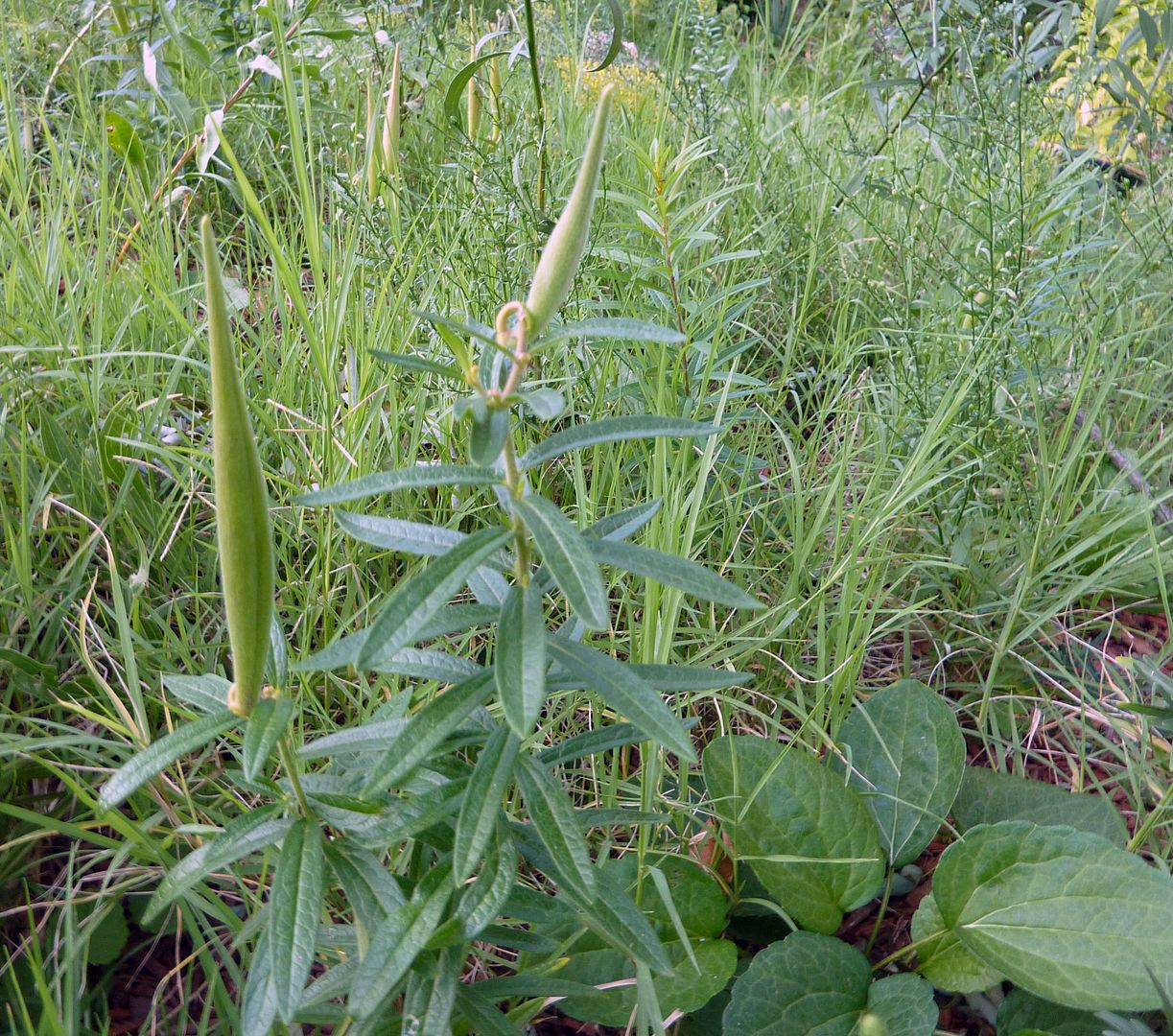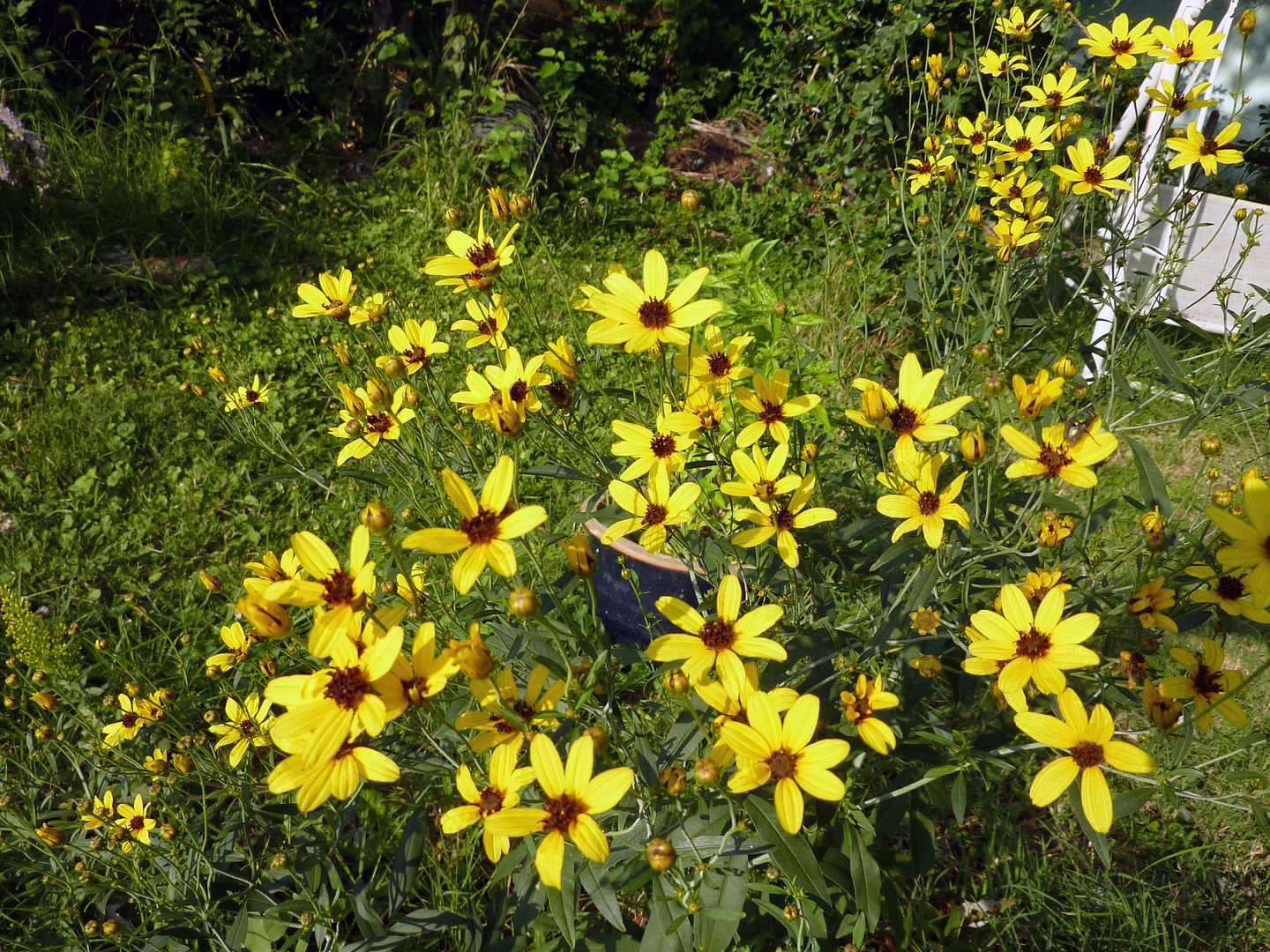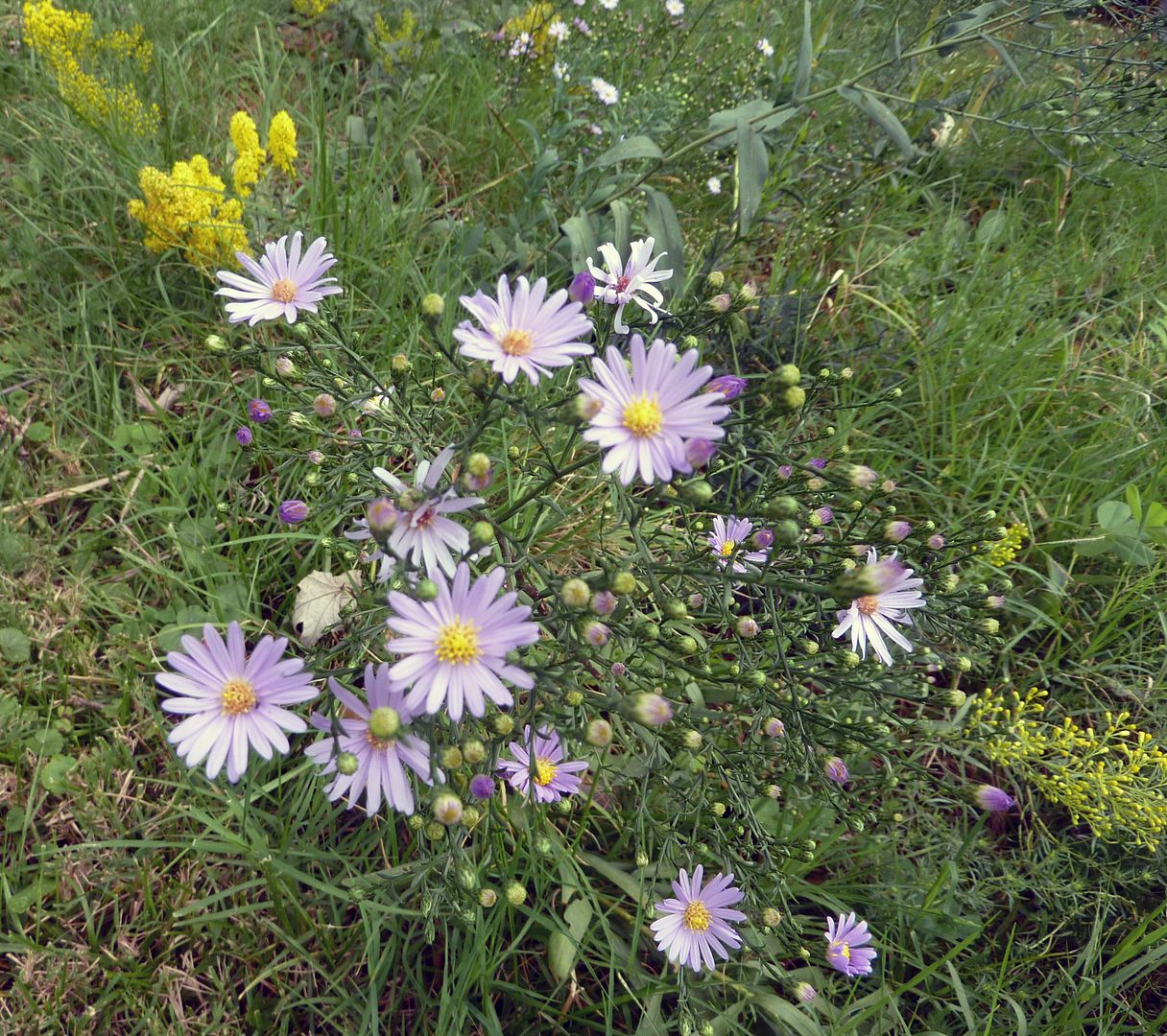So earlier this year I started a prairie garden, the wrong way. Generally you're supposed to either suffocate or herbicide everything in the desired location for a full year. Had I taken that seriously I might have simply used the space as a vegetable garden with plastic mulch. I have several family members who use this stuff for their gardens and have great results. There is virtually no weeding.
As this relates to a prairie garden though I read eliminating everything from the site has to be done in order for most seeds to germinate, and for most seedlings to get through their first year.Another thing I've read is that turning the soil over (like I did) disrupts the seed bank and causes a mass germination of weeds. For both of these reasons I decided to lay down a wood mulch, and rather than using seeds I went with plugs.
Plugs are generally plants that have already been growing for a season that typically come in 4' pots. My theory was these plants are more mature and are better able to hold their own against the weeds. Sure enough many of them flowered shortly after planting. This Jacob's Ladder, Polemonium reptans, above was actually flowering in the pot (also a sign of root stress).
Their flowers actually turn blue with age and when mass planted one almost gets a misty cloud effect. They will grow in full sun, full shade, somewhat dry, to somewhat wet, and there are assorted cultivars with all sorts of foliage options. I went with the true species of course.
Western Spiderwort, Tradescantia occidentalis, is for whatever reason listed as Native to New Jersey, and New York and otherwise restricted to the western half of the US. I didn't know what to expect with this plant. I needed something grass-like but wanted it to flower too.
This was a great choice because I love bright colors. And this sure went with the orange of the Butterfly Weed, Asclepias tuberosa.
Things were going nicely at first. Generally the warm season grass that comprises our lawn hadn't taken over yet.
Almost all of the butterfly weed bloomed this year.
As summer got into full swing the grasses started encroaching with root tubers. A sunflower from the adjacent bird feeder started growing from seed as well. Behind this garden against the fence I planted a native dogwood, Cornus florida, and found a spot for some Anise Hyssop, Agastache foeniculum, to go.
From another angle we can see my solution to all the crap laying around in our yard is to plant gardens in front of them. Actually the glider just needs covers or something on them and it will look nicer. The truck cab in the middle there holds straw under it supposidly for wildlife to live but really I could do without it. We've been stacking old PVC pipe and logs on top of it for convenience.
Adjacent Iron Weeds in various gardens started blooming. I noticed this caterpillar that I keep forgetting the name of. Basically they turn the color of whatever type of flower they happen to be eating. I've found them in all sorts of colors.
Come August the Showy Goldenrod, Solidago speciosa, started budding. Now I've herd two opinions about this plant. A source in Missouri from the Shaw Nature Preserve says this plant is down right thuggish, and loves to spread everywhere. The guy who maintains the prairie at the Mt. Cuba Center in Delaware says they've grown a few plants there right next to their meadow garden for years and it's never reseeded. So your local variety and how it reacts to your soil type may vary.
The Monarchs found the milkweed though I noticed none of the caterpillars in the prairie garden made it to adulthood. I suspect it's due to the lack of cover, and having a bird feeder right next to door sure didn't help. Even though they're toxic to eat, birds and spiders will still take bites out of them until they learn not to do so.
You know it's the end of summer when things start falling over. The Showy Goldenrods are pretty much laying down, though it's not entirely displeasing. The Tall Coreopsis, Coreopsis tripteris, (at right) did a great job standing up all by itself. I love tall perennials but hate it when they fall over.
Here you can see the grass encroaching among the other plants. It's a little tough to pull out of the ground, so hopefully next year I can pull it out just as it starts growing. I've noticed some other plants in my other gardens do push that grass right out of their way. So hopefully when things get better established the grass will get shaded out.
Here's the tall Coreopsis, though not as tall as it's supposed to get. I read online they grow to be 5' to 8' tall.
I learned the hard way that Sky Blue Aster and Smooth Blue Aster look exactly the same. The only difference is Smooth Blue has a slightly larger flower, and Sky Blue has extra leaves around the stem. Neither are distinguishable at a glance. The flower color is exactly the same. (You're looking at Smooth Blue Aster in case you were wondering.) Both are pretty but I don't seen the need to own both.
Things I planted but didn't get to see:
Lace Leaf Coreopsis - grew and flowered but not very well.
Stiff Coreopsis - grew but didn't flower. This plant reseeds freely and spreads by root suckers. They're not very big plants but can be a slight problem in mass.
Blue Star - Will probably get to big for this spot but we'll see what happens.
Blue False Indigo - Will probably get to big for this spot but we'll see what happens.
Purple Prairie Clover - Grew, but wildlife kept nibbling off the flower buds before any of them bloomed.
Ozark Coneflower - This went dormant right when I planted it. I'm not even sure they'll come back next year.
Orange Coneflower - which looks exactly like Black Eyed Susan. Supposedly it's longer lived.
Meadow Liatris - Well worth your money if you can grow them. One of the best Monarch nectar plants.
Aromatic Aster - More people should grow this for it's natural dome habit. As for the smell they're only slightly fragrant but it's nothing special.
Backup Plan:
To plant more of what works.
